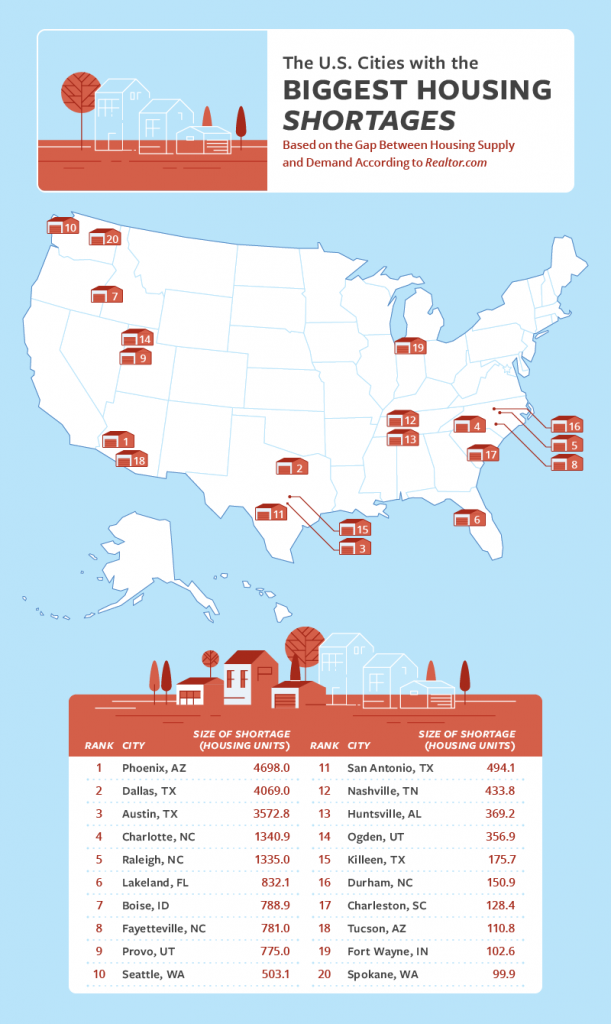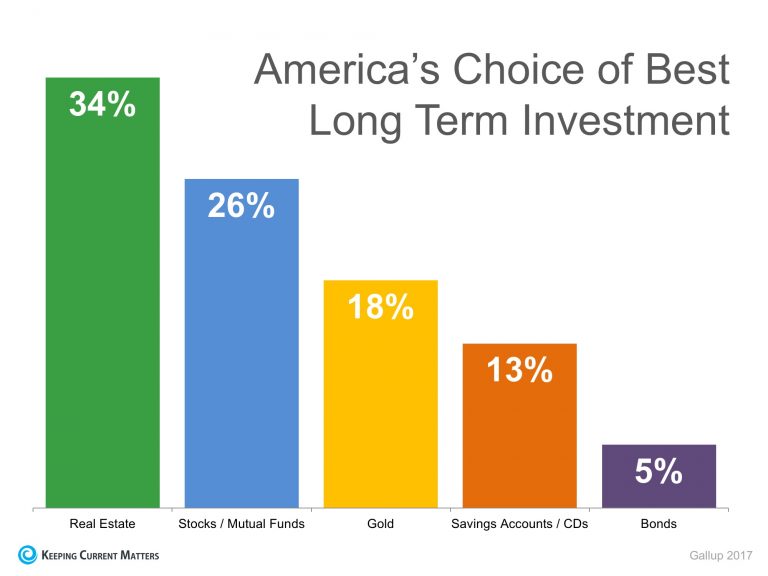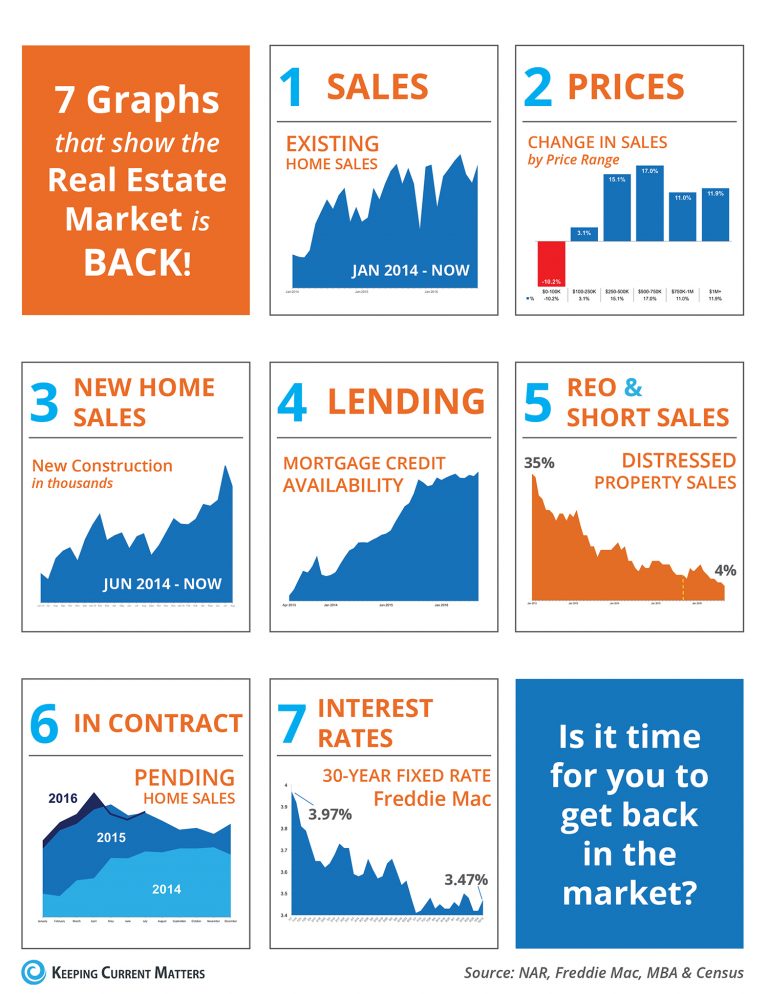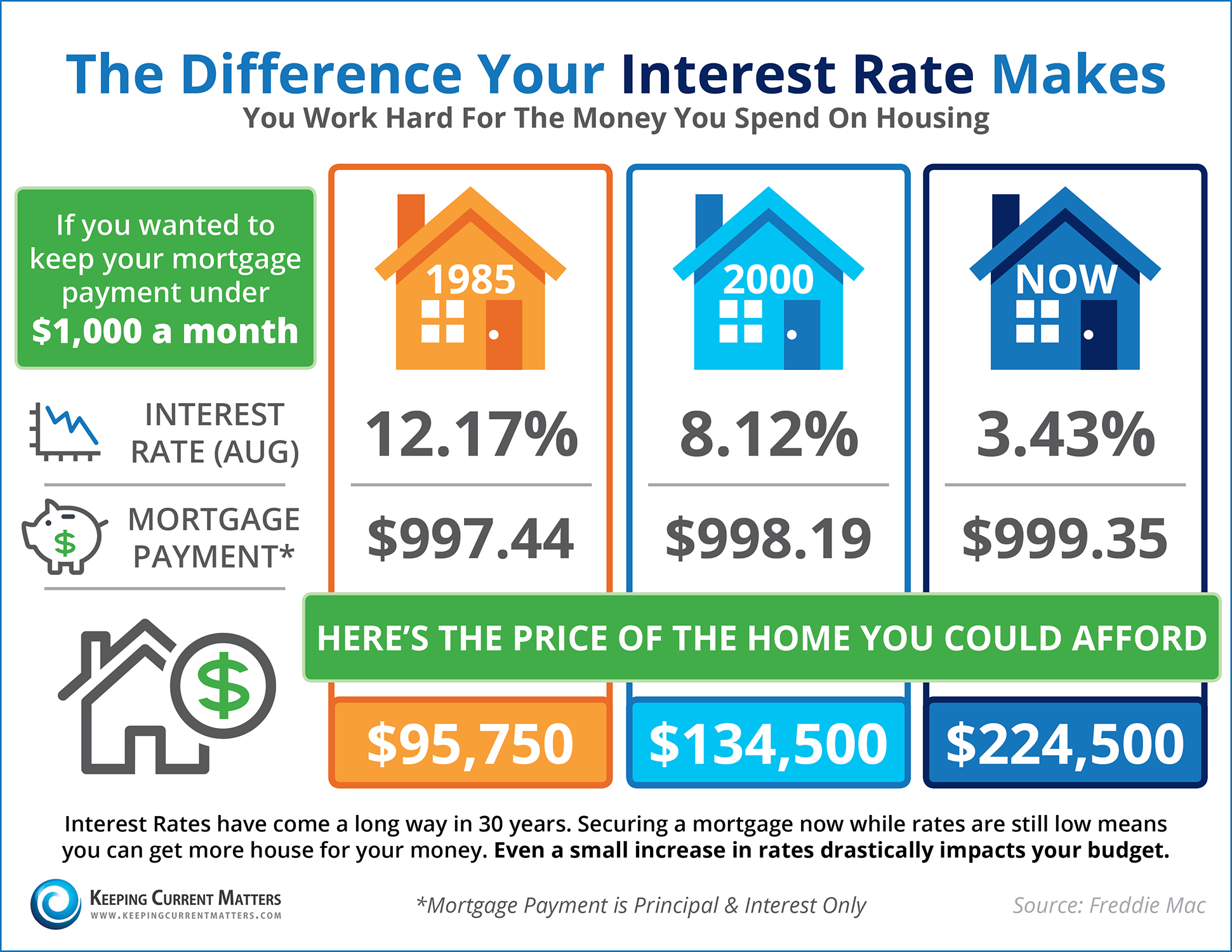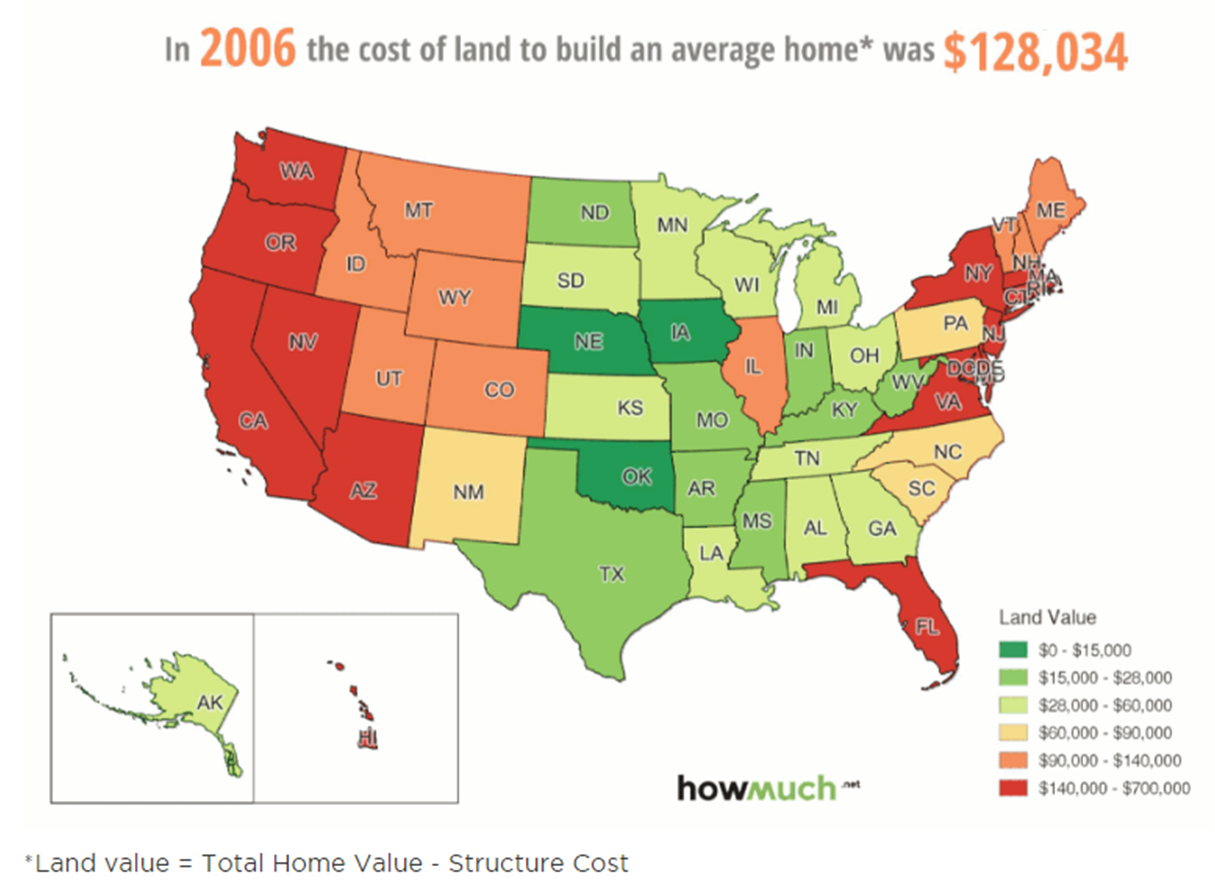The inventory shortage, which has been a nuisance for years now, is causing even greater disruption since the pandemic began. Fueling intense buyer competition and sky-high home prices, the historic supply crunch requires a “once in a generation” federal response to address decades of underinvestment and underbuilding, argues the National Association of REALTORS®.
There are areas of the country that exemplify the problem and support NAR’s urgent call. DeedClaim, an online deed preparation service, analyzed the 50 largest metros to identify the markets with the biggest housing deficits. The site crunched realtor.com® data to determine each metro area’s supply levels and analyzed population changes to find where the lowest amount of available housing is compared to demand.
Phoenix and Dallas topped the list with the biggest housing shortages. Cities in Southern states tended to have the largest housing shortages, according to the study.
